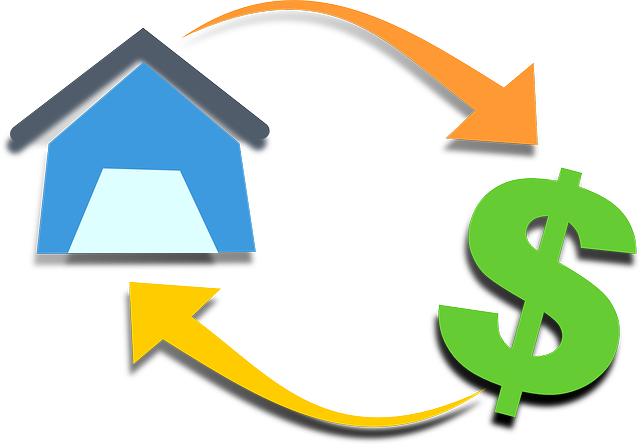Debt restructuring for individuals is a strategic solution offering financial stability and freedom by renegotiating debt terms with creditors, reducing interest rates and repayment periods. It begins with assessing your financial situation, prioritizing high-interest debts, and creating a realistic repayment plan. Key steps include consolidation, settlement, or bankruptcy, based on personal factors. Maintaining a balanced approach involving debt repayment and credit building is crucial for long-term success. Post-restructuring, adopting sustainable habits like budgeting and emergency fund creation ensure sustained financial health.
Debt restructuring is a powerful tool for individuals overwhelmed by debt, offering a proven path to financial freedom. This comprehensive guide delves into the concept, benefits, and various options available, from understanding your unique financial situation to creating a tailored repayment plan. We explore strategies for rebuilding credit while paying off debt, ensuring long-term financial well-being. By the end, you’ll be equipped with the knowledge to navigate debt restructuring successfully and take control of your financial future.
- Understanding Debt Restructuring: Unraveling the Concept and Benefits
- Assessing Your Financial Situation: The First Step Towards Freedom
- Types of Debt Restructuring: Which Option Fits Your Needs?
- Creating a Realistic Repayment Plan: Strategies for Success
- Building Credit While Paying Off Debt: A Balanced Approach
- Long-Term Debt Management: Sustaining Financial Well-being After Restructuring
Understanding Debt Restructuring: Unraveling the Concept and Benefits

Debt restructuring for individuals is a strategic approach designed to help those burdened by debt reprioritize and manage their financial obligations more effectively. It involves renegotiating terms with creditors, often resulting in lower interest rates, extended repayment periods, or both. This concept is especially beneficial for those facing overwhelming debt, as it offers a path towards financial stability and freedom.
By restructuring debt, individuals can significantly reduce the overall cost of their loans and make repayments more manageable. It allows for a fresh start, enabling folks to regain control over their finances and avoid the cycle of high-interest payments and default risks. This process is not just about lowering monthly installments; it’s about creating a sustainable financial plan tailored to individual needs, ensuring long-term debt freedom.
Assessing Your Financial Situation: The First Step Towards Freedom

Assessing your financial situation is the critical first step on the journey to debt freedom. It’s essential to gain a clear understanding of where you stand financially, as this will guide your next moves. Start by listing all your debts, including credit cards, personal loans, and any outstanding balances. Next, calculate your total income and expenses to determine your cash flow. This step may involve poring over bank statements, paying bills, and tracking spending habits for a few months to get an accurate picture.
Once you have this data, analyze your financial situation objectively. Identify areas where you can cut back on discretionary spending and focus on allocating more resources towards debt repayment. Prioritize high-interest debts first and consider options like consolidating or refinancing to lower interest rates and reduce monthly payments. Remember, a thorough assessment equips you with the insights needed to make informed decisions during the debt restructuring process.
Types of Debt Restructuring: Which Option Fits Your Needs?

Debt restructuring is a powerful tool for individuals seeking to regain control over their finances and achieve debt freedom. The process involves renegotiating the terms of your existing debts, often with the help of a financial advisor or specialized agency. This can take several forms, each suited to different financial situations and goals.
One common type is debt consolidation, where multiple debts are combined into a single loan with a lower interest rate. This simplifies repayment by reducing the number of payments needed, making it easier to manage. Another option is debt settlement, which involves negotiating with creditors to accept less than the total amount owed. While this may sound extreme, it can be an effective way to reduce overall debt quickly. For those facing insurmountable debt, bankruptcy offers a legal pathway to a fresh start, though it carries significant consequences and impacts credit scores. Each of these options has its pros and cons, and the best choice depends on individual circumstances, including income, available assets, and willingness to take risks.
Creating a Realistic Repayment Plan: Strategies for Success

Creating a realistic repayment plan is a crucial step in any debt restructuring journey for individuals. The first strategy involves assessing your financial situation thoroughly, listing all debts, and understanding their interest rates and minimum payments. This provides a clear picture of the challenges ahead and helps set achievable goals. Prioritizing debts based on interest rates or difficulty can make the process more manageable, ensuring that higher-interest debts are addressed first to minimize long-term costs.
Additionally, developing a budget is essential to making informed decisions about debt repayment. Tracking income and expenses allows for identifying areas where adjustments can be made to free up extra funds for debt reduction. Strategies like cutting non-essential expenses, negotiating lower bills, or exploring side hustles can provide the necessary financial flexibility. Regularly reviewing and adjusting your budget as you progress ensures that your repayment plan remains realistic and adaptable to changing circumstances, ultimately leading to successful debt freedom.
Building Credit While Paying Off Debt: A Balanced Approach

While navigating debt restructuring, it’s crucial to maintain a balanced approach that includes both paying off debt and building credit. Focus on creating a realistic budget that allocates funds for debt repayment while also setting aside money for responsible credit utilization. This might involve using a portion of your budget to build an emergency fund, which can prevent future debts and provide stability during the restructuring process.
By consistently making payments on your debts and demonstrating responsible credit usage, you can gradually improve your credit score. This, in turn, opens up opportunities for better loan terms and interest rates in the future. A strong credit profile also showcases your financial responsibility to lenders, increasing your chances of successful debt restructuring and ultimately achieving debt freedom.
Long-Term Debt Management: Sustaining Financial Well-being After Restructuring

Debt restructuring for individuals is not just about alleviating immediate financial strain; it’s a strategic step towards long-term debt management. After successfully restructuring, maintaining financial well-being requires adopting sustainable habits and planning ahead. This involves creating a detailed budget that allocates resources effectively, prioritizing high-interest debts, and building an emergency fund to safeguard against unforeseen expenses.
Regularly reviewing spending patterns and adjusting the budget as needed ensures individuals stay on track. Moreover, seeking professional guidance or utilizing online tools can help monitor progress, providing the support necessary for sustained financial health beyond debt restructuring.
Debt restructuring for individuals offers a clear path towards financial freedom, providing much-needed relief from overwhelming debt. By understanding the concept, assessing your unique financial situation, and exploring various restructuring options, you can create a tailored plan to regain control. With strategic repayment strategies, a focus on building credit, and long-term management, this proven process enables individuals to break free from debt and secure a brighter financial future. Embrace the journey towards financial wellness with informed choices and dedicated execution.







